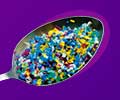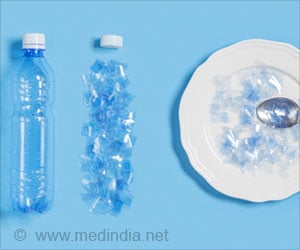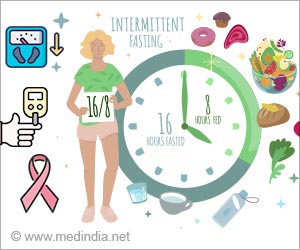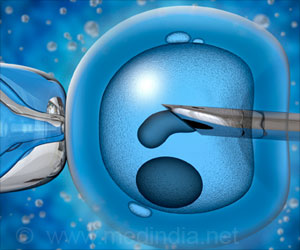You slice, you dice… but are you also ingesting plastic? Rethink your cutting board choice for a healthier kitchen and a cleaner planet.
- Plastic chopping boards can release over 70 million microplastic particles annually into food and wastewater
- Microplastics are being detected in human blood and organs, raising serious health concerns
- Wooden and steel boards offer eco-friendly, safer alternatives- opt for natural finishes or long-lasting metals
Your plastic cutting board might be adding more than just flavor to your food- up to 150 million microplastic particles a year! #microplasticalert #healthycooking #sustainableliving #medindia ’
Types of Cutting Boards
Cutting boards come in a range of materials, such as steel, wood, and plastic, each with unique advantages and things to keep in mind.Have you considered the health implications of your chopping board? Read on to find more, which may persuade you to reconsider your present cutting board selection.
Microplastics: A Cutting-Edge Concern with Plastic Chopping Boards
Many kitchens have plastic cutting boards because of their price, simplicity of cleaning, and durability. However, underlying the convenience lurks a less obvious but equally alarming issue: microplastics.Plastic cutting boards are popular and convenient, but as you chop and cut, they release small particles that pollute the environment and may even pose health hazards to you and your family. Consider the effects on people and the environment before selecting a cutting board.
The wear and tear of larger plastic objects frequently produce microplastics, which are microscopic plastic particles smaller than five millimeters. Cutting boards made of plastic have been found to be a major source of these particles. Plastic cutting boards can release up to 71 million polyethylene and 79 million polypropylene microplastic particles annually into household wastewater, according to a 2022 study published in Environmental Science & Technology (1✔ ✔Trusted Source
Cutting boards can produce microparticles when chopping veggies, study shows
Go to source).
Every time you cut, chop, or dice, tiny pieces of plastic are produced by the friction of your knife on the board. These pieces may wind up in your food, wastewater, or even the environment. These particles eventually make their way to rivers, seas, and soil ecosystems after frequently passing through water treatment facilities.
Health Implications of Microplastics
Human tissues and bloodstreams are increasingly being found to contain microplastics. In 2018, 80% of study participants had microplastics in their blood, according to research from the Medical University of Vienna (2✔ ✔Trusted SourceMicroplastics detected in humans for the first time
Go to source). Although the long-term consequences are still unknown, worries regarding bioaccumulation, hormone disruption, and inflammation are intensifying.
Environment Contamination with Microplastics
Cutting boards also contribute to environmental contamination by shedding plastic particles. These consist of:- Soil Contamination: Microplastics from treated wastewater frequently build up in agricultural soils, affecting soil biodiversity and plant health.
- Marine Pollution: It occurs when marine life consumes plastic particles found in rivers, which impacts their ability to reproduce and thrive. Additionally, plastics are introduced into the human diet through seafood.
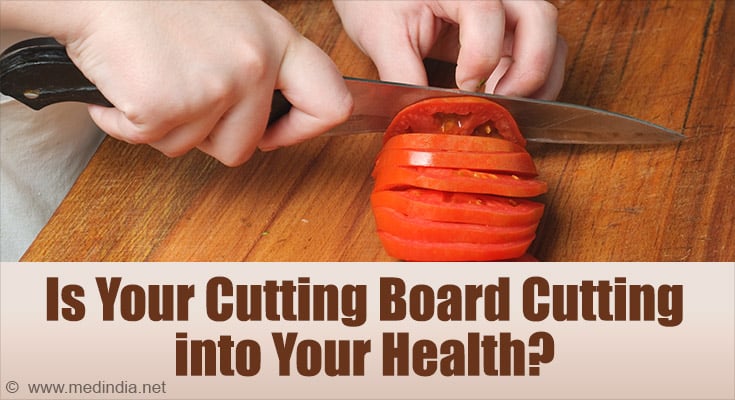
Wood: Is it Really an Eco-Friendly Substitute for Plastic Cutting Boards?
Reducing microplastic pollution can be achieved by switching to cutting boards made of non-plastic materials. Cutting boards made of wood shed more microparticles than those made of plastic, however, if the board is sealed naturally, the risk is reduced. Your decision may help create a cleaner environment and a healthier lunch.Select this biodegradable, renewable, and natural choice, paying particular attention to hardwood selections with a natural finish. Wood is a hygienic option due to its inherent antibacterial qualities. Steer clear of boards with synthetic finishes, as they have the potential to leak chemicals, and think about going finish-free.
Advantages of Steel Chopping Boards
Steel chopping boards are simple to clean and maintain. It can be slightly noisy during use and might not be suitable for delicate chopping tasks. But the most important thing is that they are a sustainable solution. Unlike plastic or wood, it does not need to be replaced over time.Plastic, Wood or Steel Chopping Board- Make a Conscious Choice
Despite their convenience, plastic cutting boards should be carefully considered in light of the mounting evidence of their role in microplastic contamination. You may lessen your impact on the environment and contribute to the preservation of ecosystems and your health by switching to sustainable options and practicing mindful cooking.References:
- Cutting boards can produce microparticles when chopping veggies, study shows - (https://www.acs.org/pressroom/presspacs/2023/june/cutting-boards-can-produce-microparticles-when-chopping-veggies.html)
- Microplastics detected in humans for the first time - (https://www.meduniwien.ac.at/web/en/about-us/news/detailsite/2018/news-october-2018/microplastics-detected-in-humans-for-the-first-time/)
Source-Medindia



